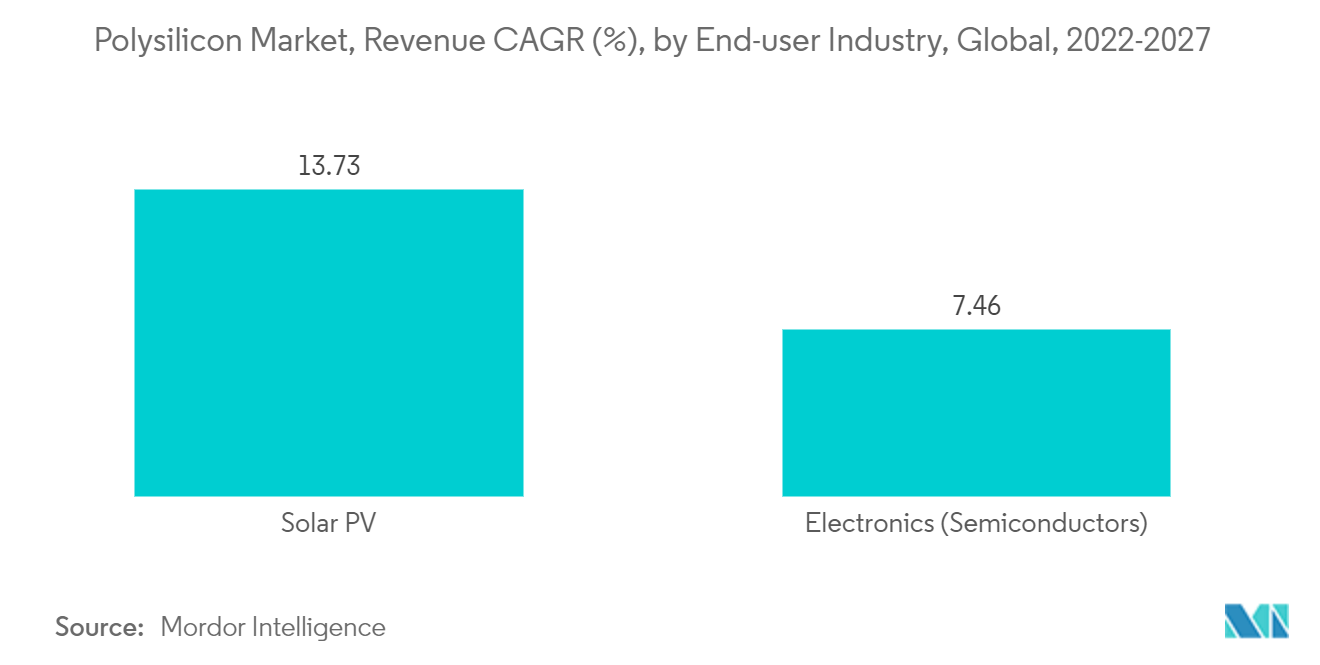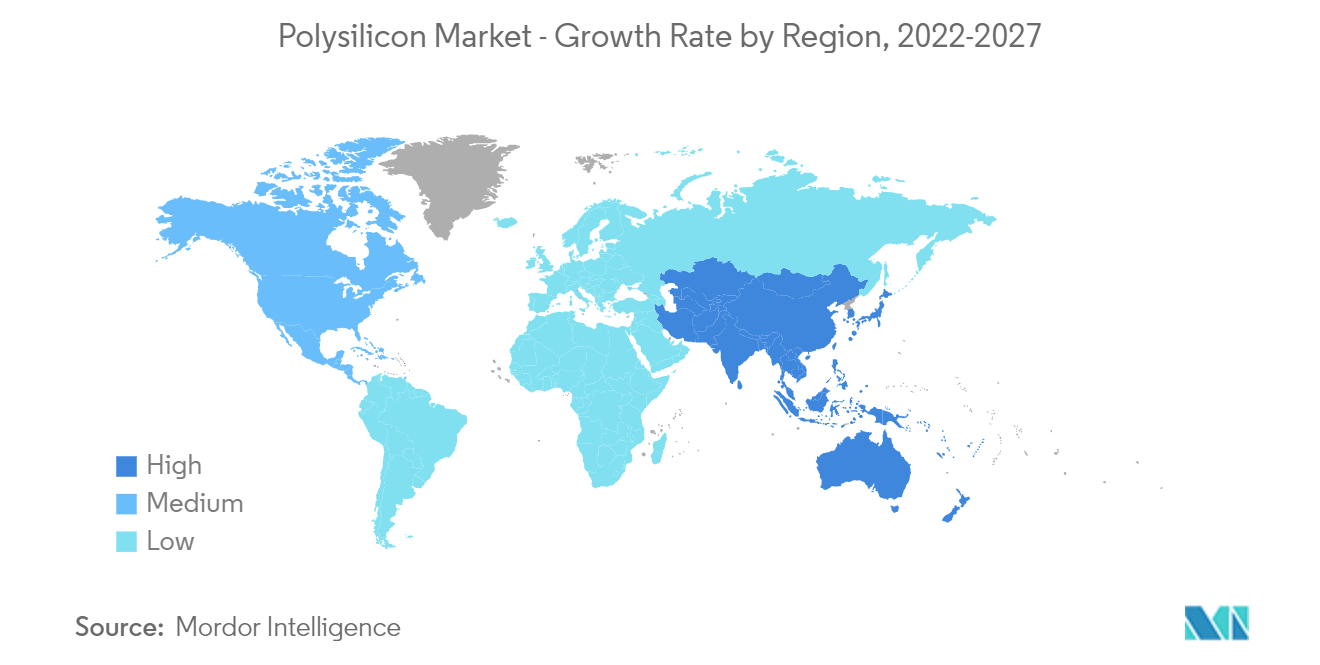Market Trends of Polysilicon Industry
This section covers the major market trends shaping the Polysilicon Market according to our research experts:
Growing Demand from the Solar PV Industry
- Polysilicon is a key material in the solar PV industry as it is one of the most important feedstock materials used to manufacture silicon-based solar cells.
- Polysilicon is used to produce monocrystalline solar panels and multi-crystalline panels. Monocrystalline solar panels are one of the most popular solar panels used in rooftop solar panel installations today. Monocrystalline silicon solar cells are manufactured through the Czochralski method, in which a seed crystal of silicon is placed into a molten vat of pure silicon at a high temperature.
- This process forms a single silicon crystal, called an ingot, which is sliced into thin silicon wafers, which are then used in solar modules.
- Polycrystalline panels are sometimes referred to as multi-crystalline panels. They are popular among homeowners looking to install solar panels on a budget.
- Like monocrystalline panels, polycrystalline panels are made of silicon solar cells. However, the cooling process is different, which causes multiple crystals to form instead of one. Polycrystalline panels used in residential homes usually contain 60 solar cells.
- The solar PV industry is one of the fastest-growing industries in the world. According to the International Energy Agency (IEA), this industry accounts for almost two-thirds of the net power capacity across the world.
- Using solar PV to power mini-grids is an excellent way to bring electricity access to people who do not live near power transmission lines, particularly in developing countries with excellent solar energy resources.
- Solar power remains the fastest-growing renewable energy across the world, therefore representing over half of the 3,064 GW (gigawatt) of renewable capacity installed internationally in 2021, as per the International Renewable Energy Agency (IRENA).
- According to International Renewable Energy Agency (IRENA), the total global solar capacity expansion increased by 19% in 2021, recording 133 GW additional installations. Furthermore, as per World Economic Forum, in 2021, for the first time, solar and wind together generated over 10% of the total electricity across the world, with solar power accounting for around 5% of the share.
- In 2021, the total global installed solar energy capacity was around 850 GW, compared to 770 GW in 2020. As per IEA, the additions in renewable power capacity in 2021 were driven up by 290 GW of solar PV new commissions, representing a 3% hike from 2020. Solar PV accounted for more than half of the total renewable power expansions the previous year.
- Therefore, the growing solar PV industry is expected to boost the demand for polysilicon in the coming years.

Asia-Pacific Region to Dominate the Market
- Asia-Pacific was found to be the major consumer of polysilicon, owing to increasing consumption from countries such as China, South Korea, and India.
- The Chinese ministry recently released the polysilicon production capacity in the country, which totaled 122,000 tons.
- Sizeable pipelines for new polysilicon expansions in the country continue to be built, with over 1.2 million tons expected to be online by 2023. Although most expansions (72%) are planned outside of Xinjiang, the vast majority (89%) of global polysilicon production is still expected to take place within China.
- South Korea has the world's ninth-largest solar installation. The country also generates about 4% of its electricity from solar energy, and since November 2021, the amount of solar power has been steadily increasing. Furthermore, according to the International Trade Organization, South Korea is the 14th country to become carbon neutral by 2050, with an interim target of reducing emissions by 40% by 2030.
- South Korea imports more than 90% of its energy resources, sustaining industries deemed highly energy-intensive due to its lack of domestic energy resources. In 2021, South Korea generated 576,316 GWh of electricity, with an 18% increase in renewable energy (43,085 GWh).
- In 2021, Tata Power Solar bagged orders worth INR 538 crore (~USD 65.77 million) from state-run Energy Efficiency Services Ltd (EESL) to set up multiple distributed ground-mounted solar projects of approximately 100MW in India.
- As of June 2021, many of the world's largest solar power facilities were located in India and China. In India, Bhadla solar farm, located in Jodhpur district, Rajasthan, has a total production capacity of 2,245 megawatts.
- Hence, such trends, coupled with rapidly growing end users, are expected to boost the demand for polysilicon in countries of the Asia-Pacific region during the forecast period.

